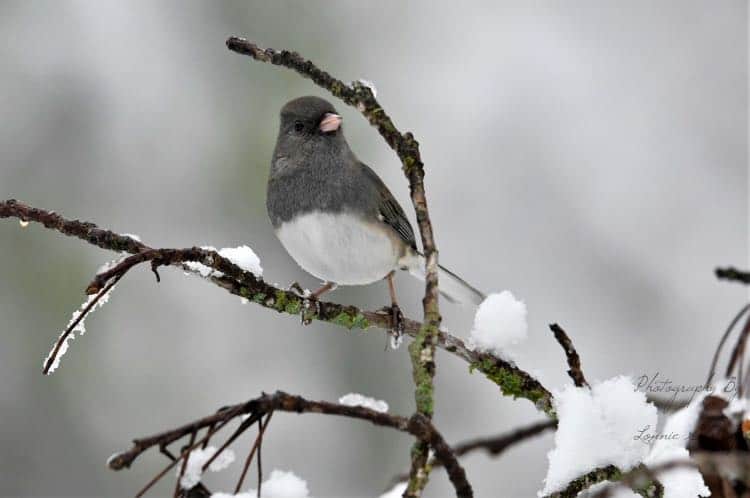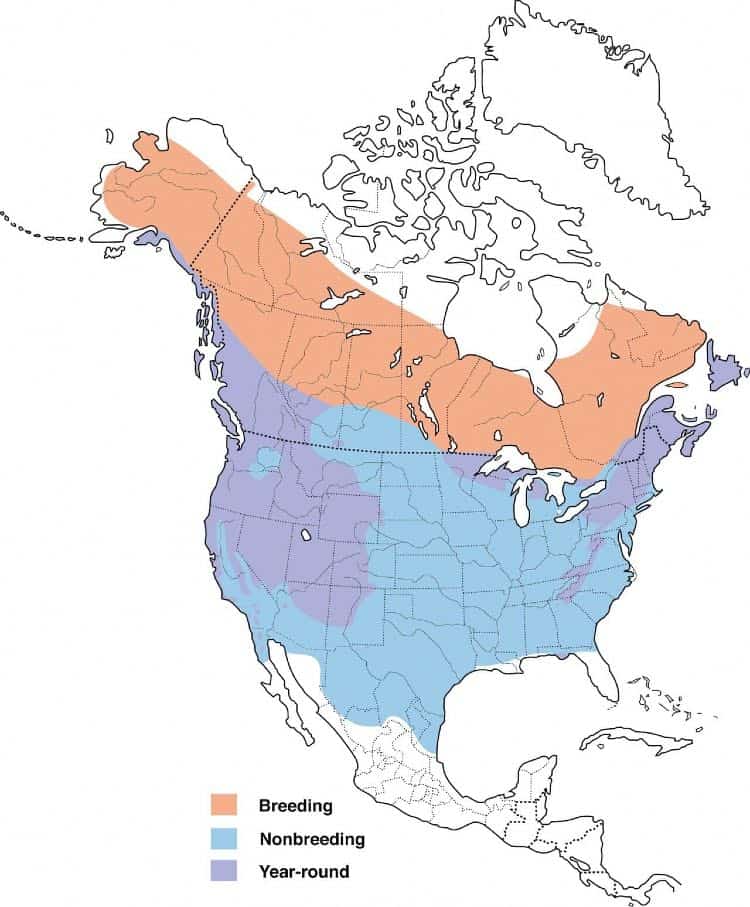
Appearance: Dark-eyed juncos are tiny birds about 5.5″ – 6.5″ long. Males are dark gray with a white underside and pink bill. Females are the same except brownish gray.
Diet: Insects, spiders, seeds.
Feeder food: Nyjer, black-oil sunflower seeds, hulled sunflower seeds, safflower seeds, cracked corn, hulled peanuts, and suet.
Habitat: Juncos are found across the US and Canada so can be found in a variety of habitats including forested areas (both coniferous and deciduous), wide-open spaces, partially wooded edges, parks, and backyards.
Nesting: Nests are located in a variety of locations from ground-level surrounded by vegetation to in a hanging basket. They have 1-3 broods/season, 3-6 eggs per brood that can be any of these colors: White, gray, pale bluish-white, or pale-greenish white speckled with brown, gray, and green. Occasionally unmarked. Incubation lasts 9-13 days.
Migration: Dark-eyed juncos are partial migrators. Some remain in their year-round range all seasons of the year while others migrate north in spring and south for the winter.
Year-round range: Southern Alaska, Washington, Oregon, Idaho, Montana, Wyoming, Utah, California, Nevada, Colorado, Arizona, New Mexico, northern Minnesota, Wisconsin & Michigan, Pennsylvania, New York, New England, and British Columbia & Alberta in Canada.
Breeding range: Alaska and Canada.
Winter range: The remaining US states (outside the year-round range above), southeast Alberta, southern Saskatchewan, far southeast Ontario, and Mexico.
Range Map

Want to see dark-eyed juncos in your yard? Check out my article: 7 Proven Ways to Attract Dark-Eyed Juncos.

